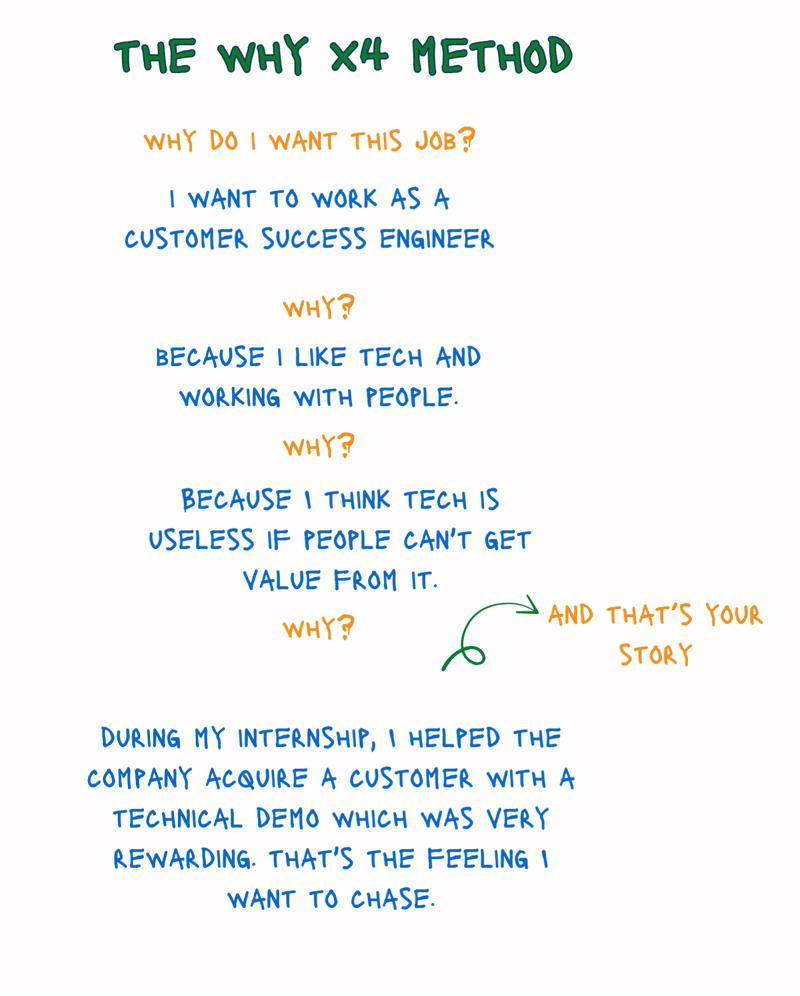What a Tech Recruiter Actually Wants to See on Your Resume 🔖
[3 min read] 🌀 I spoke to a veteran tech recruiter about what actually makes a resume stand out from the pile
Alright, today let’s talk about that hollow feeling after you click 'submit' - the one where you wonder if your carefully crafted application landed in some company’s digital trash can 🗑️♻️
By the time you submit it, you’ve already spent hours tailoring your resume, picking the perfect "action verbs", and maybe even asked ChatGPT to "make it sound more professional." Then you hit 'submit' and get… silence.
What if the secret to standing out isn't adding more buzzwords, but mastering a simple, two-part formula that gets you a response?
I had a fascinating chat last week with Charlotte Steggall, a tech recruiter with over 10 years of experience hiring Gen Z for tech roles. She told me the applications that are impossible to ignore always do two things:
1️⃣ they tell a compelling story,
2️⃣ they provide concrete proof.
Let’s dive into the details 👇
Part 1: Find Your Story (The Soul) 🧐
First, let's talk about the story. Charlotte said she often feels tired of reading the same lines over and over in resumes.
When I see a resume that says, 'I'm a hard-working individual, I work great in teams,' I'm think, 'Yeah, sure, so does everyone else.'
To cut through that noise, you need to find your unique motivation - the "soul" of your application. She shared a brilliant technique called the "Why x4" method.
Start with a basic statement and ask "Why?" four times to dig to the core. For someone looking for a job as a lawyer, it looks like this:
That last answer is the story. That's the soul you need to find. 🕊️
📝 HQ Tip: Recruiters value personal stories about passion and motivation that reveal uniqueness, often uncovered through the "Why x4" technique.
Part 2: Provide Your Proof (The Receipts) 🧾
But a great story isn't enough on its own. You have to prove it.
I asked Charlotte what the deciding factor is when picking candidates to interview - a perfect GPA from a top school or something else?
She told me about two universities near her. One is the world-renowned Cambridge University, known for it’s rigorous academics, but doesn’t allow it’s students to have part time jobs. The other is a local college called Anglia Ruskin. She said she loves recruiting from Anglia Ruskin.
Why? Because those students have grit.
They often juggle part-time jobs, lead clubs, and - most importantly - work on their own projects. They have the receipts to prove their passion. She was blunt: a graduate with fantastic grades but no tangible experience (internships, projects, volunteering) will find it "really, really hard" to get a job - especially in today’s market where AI can give you unlimited knowledge.
Your projects are your proof. They are the tangible evidence that backs up the story you're telling.
Putting your Why + What on Paper 📋
The magic happens when your story ("why" you're passionate) is immediately followed by your proof ("what" you've done about it).
Where does all of this actually go on your resume?
Your Story (The "Why"):
Resume Summary: This is the 2-3 sentence section at the very top. Don't waste it with generic phrases. Weave your "why" directly into it.
Instead of: "Motivated software engineer seeking a challenging role."
Try: "A software engineer driven by a fascination for accessible technology [your why], which led me to develop a voice-command browser extension for users with motor impairments [your proof]."
Cover Letter: If the job you’re applying for requires this, this is additional space where you can tell the full story.
Elaborate on your core story: “My grandfather had a stroke a few years ago, and I watched him struggle to use a standard mouse and keyboard to do simple things like read the news or email us. He felt cut off from the world. It made me realize that I didn't just want to build any tool; I wanted to build technology that adapts to people's unique needs. I became fascinated with how I could use my skills to bridge those gaps.”
Your Proof (The "What"):
A Dedicated 'Projects' Section: Create a section that features 2-3 of your best projects. For each one, include its name, a brief description, the tech you used, and most importantly, a clickable link to the GitHub repo or a live demo.
Clickable Links: Make it easy for recruiters. Ensure your LinkedIn, portfolio, and GitHub links are active and easy to find at the top of your resume. Let them see your work with a single click.
Try this out on your next application! It turns your resume from a generic document into a compelling narrative about a candidate they absolutely need to meet.
Find your why 🧭,
Show your grit 💪,
and let your story shine through ✨.
That's it for today! After reading this, what's one cliché you're going to remove from your resume? Let me know by replying to this email or in the comments – we can all learn from each other's experiences!
If you found this valuable, consider subscribing and sharing it with your friends:
I wish you a great week!
Until next time,
Sonika



Was great speaking with you!